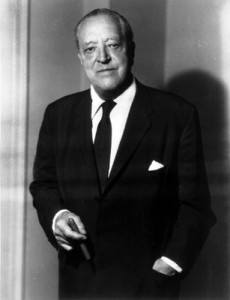 In the mid-20th century architects like Mies van der Rohe envisioned simplicity and wholeness in urban centers. Into the chaos of the city their residential designs sought to bring wholeness and community. (For reference, see Upton Sinclair’s The Jungle.) They attempted to convince residents that an amazing community life could be had within just a short walk or bus ride from the office, the market, church, or anywhere else you’d need to go.
In the mid-20th century architects like Mies van der Rohe envisioned simplicity and wholeness in urban centers. Into the chaos of the city their residential designs sought to bring wholeness and community. (For reference, see Upton Sinclair’s The Jungle.) They attempted to convince residents that an amazing community life could be had within just a short walk or bus ride from the office, the market, church, or anywhere else you’d need to go.
This sense of urban holism was central to the phrase van der Rohe is now known for, “God is in the details.” In the chaos of our daily life, when we slow down to notice the small things, we notice God everywhere.
Urban holism was largely rejected in the late 1960s and 1970s. When racial tensions, riots, crime, and violence increased in urban environments most population centers like Los Angeles, New York, Chicago, Detroit, and Philadelphia experienced a new residential phenomenon– suburbanization. (Or the more loaded term, white flight.)
Suburbanization completely changed the landscape of American culture. It was a rejection of community life and an embrace of individualism. Explore just about any 1970s suburban development and you will see the contrast from urban life. Instead of communities built around common spaces like parks, markets, and clusters of people who knew one another, homes were constructed like fortresses and oasis for the individual family. The front porch became a façade. The double garage doors became a gate. The home itself was designed for privacy and experiences of the outdoors lead to a fenced backyard. Words that sold these houses were privacy, seclusion, safety. The master bedroom overlooked a spacious backyard of grass. The kitchen window looked into the backyard where mom could watch her kids play on their very own playset in the safety of their encampment, in complete opposition to the community life they experienced as children.
You had to get into the car to go to the market, to school, to church, or just about anywhere. No longer did city planners include mixed-use development zones, it was Residential zoning on one side of the freeway and Commercial on the other. At the same time, people greatly increased their travel time to work. Instead of a walk or short bus ride, people took to newly created expressways to travel from newly formed suburbs named after forests in England to the dangerous, cold city for work.
Instead of God being in the details our cars became our gods. As people spent hours and hours alone commuting to and from work or driving our kids from one activity outside of their neighborhood to another. The American Dream was reshaped from opportunity for a better life to opportunity for a better car or bigger, more private home.
The net result was a complete rejection of life in community with one another. For centuries humans formed community with those they lived near. Now we form communities with people we like and are like us. The acquisition of things overtook the desire to acquire friendships or do what is best for our community.
It was a dramatic demarkation from van der Rohe’s philosophy.
Enter new urbanization. Through the 1990s and into today, children raised in the suburbs have stumbled upon centuries old principles of community living. There is now a reinvigoration of urban living and a rediscovery of community life. (And even adaptations like urban farming.) Initially, this movement wrought havoc on urban communities, bringing gentrification. But in recent years more careful planning has largely kept money-hungry developers from gobbling up cheap property to flip from the urban poor to the yuppy.
It’s a form of a rejection of individualism. (Or some would say a fulfillment of individualism.) As they seek community in the city they want to affirm their individuality by placing themselves into a complex ecosystem of community where their skills, passions, and ideas have value. The mainstream, suburban-focused, marketing-driven mindset of their parents struggles to understand why their children reject a comfortable, safe life in the suburbs for the chaos of the city. The news media looks at the increased ridership of public transportation and double-digit sales increases of bicycles and blames this on the price of gas. In their eyes, it could never be that people don’t want to have their own cars that they sit in for lonely hours on their way to offices full of people they don’t like.
That’s exactly what it is. One generation looks at the failure of the generation of their parents and choses another path. That’s the nature of pendulum swings. We go from one wild extreme to the next. And in the process power (and the money that follows) swings wildly from corporate megacenters of suburban idealism to mom/pop shops where community-feel and small town ideals leads to parting with dollars.
Questions for church leaders:
- Do you agree or disagree with this premise that people in America are shifting from a suburban mindset to more of a community mindset?
- How are you seeing this trend play out in your area?
- How does this impact your church?
- What are areas of the church where people currently say, “God is in the details?“
- How does this impact your definition of community life within your congregation?
- Where do you find fear in this trend? Where do you find hope?
Leave a Reply